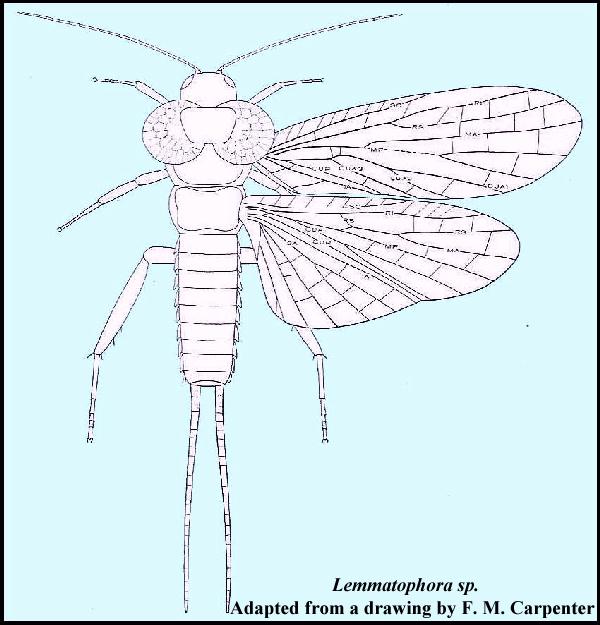284
KANSAS ACADEMY OF SCIENCE.
ON THE FINDING
OF FOSSIL INSECTS IN THE COMANCHE CRETACEOUS OF KANSAS.
BY C. N. GOULD.
During the summer of 1897, while in the employ of the state university, the writer was visited at Belvidere,
Kan., by Dr. S. W. Williston. We drove some
five miles southeast to the
Black hills (Stokes hill of Cragin), and visited the
locality where
Prof. Robert T. Hill and the writer first found dicotyledonous
leaves in the
summer of 1894. Doctor Williston remarked that the presence of
fossil
vegetation would indicate that insects might be found in the vicinity. An
hour or so was
spent in looking over the various shale beds but nothing of importance was discovered.
A few days after, while collecting shells in the vicinity, some shale was found
which apparently
contained traces of insects' wings. They were sent to Doctor
Williston, who
forwarded them to Professor Scudder, of Harvard University, the
best authority
on fossil insects in America. Professor Scudder identified the
material as
insects, but stated that on account of the poor state of preservation
he could not be
sure of genus or species. These are, so far as known, the first
fossil insects
discovered in the state.
The locality is about one-fourth of a mile south of the natural corral, on the
ranch of Mr.
Frank Abell. The horizon is Hill's No.6, or Prosser's No.11.
(See the
University Geological Survey of Kansas, Vol. 2, p. 121.) The material
is described as
"very black, sleek, argillaceous shale, ‘paper shales’ of Hill,
sparingly
fossiliferous in the lower part." It is immediately above Cragin’s
Champion shell
bed, which is well developed in the locality. Persistent work in
the shales will
doubtless reveal an interesting fauna. |

